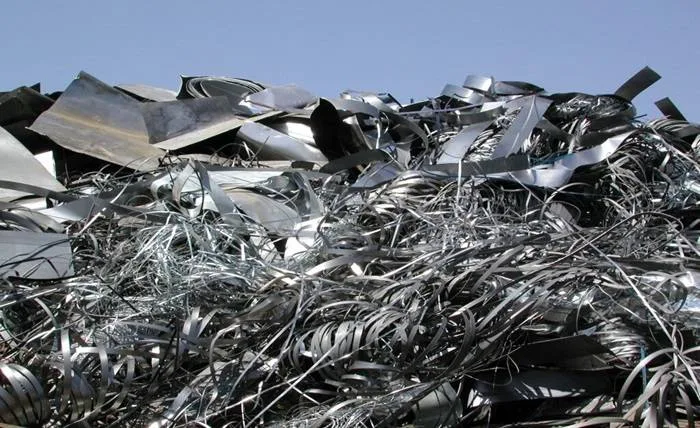Key Takeaways:
- Learn the key factors that influence scrap metal prices.
- Understand how market demand and supply impact pricing.
- Discover the role of metal purity and type in determining the value.
- Find out how global economic conditions affect scrap metal prices.
- Get tips on how to get the best prices for your scrap metal.
Introduction
Scrap metal recycling is a significant activity for both environmental and economic reasons. However, the prices for scrap metal can fluctuate widely, influenced by numerous factors. Understanding these factors is essential to getting the top prices for scrap metal in Southwest Houston. This article will explore what influences scrap metal prices, helping you navigate the market more effectively.
Market Demand and Supply
The basic principles of supply and demand are at the heart of scrap metal pricing. When demand for new metal increases, so does the demand for scrap, which leads to higher prices. Conversely, an oversupply of scrap metal can drive prices down. For example, during periods of economic growth, industries like construction and manufacturing boom, leading to a higher demand for metals like steel and aluminum. Expert analyses on financial news sites often highlight how shifts in various industries can impact scrap metal prices.
Metal Purity and Type
The quality and type of metal significantly influence its value. Pure, clean, and sorted metals fetch higher prices than mixed or contaminated scraps. For example, clean copper wire is more valuable than contaminated or mixed copper. Different metals have different values; precious metals like platinum or gold will always command higher prices than common metals like steel or iron. It’s essential to sort and clean your scrap metal for the best value.
Global Economic Conditions
Global economic conditions play a crucial role in influencing scrap metal prices. Economic indicators such as GDP growth, industrial production indices, and commodity prices have direct impacts. For example, during a global economic downturn, the demand for industrial metals may decrease, leading to lower scrap prices. Similarly, geopolitical events can disrupt supply chains and affect global trade, further influencing prices. According to the World Bank, global trends in economic growth and industrial activity are significant drivers of commodity prices.
Energy Prices
Energy prices are another essential factor in scrap metal pricing. Recycling metal is an energy-intensive process, and the cost of energy can affect the overall cost and, therefore, the price of scrap metal. Higher energy prices can lead to higher recycling costs, which may be passed on to consumers and suppliers through lower scrap metal prices. Conversely, when energy prices are low, the cost savings can be reflected in higher scrap metal prices paid to recyclers.
Currency Exchange Rates
Scrap metal is a globally traded commodity. Therefore, exchange rates can significantly impact prices. A strong currency in a scrap-exporting country can make scrap metal more expensive for foreign buyers, potentially reducing demand and prices. On the other hand, a weaker currency can boost export demand, driving prices up. Staying informed about currency trends and their potential impact on international trade can help you better understand and navigate price fluctuations.
Seasonal Fluctuations
Seasonal factors can also influence scrap metal prices. During the winter months, for example, construction activities may slow down due to weather conditions, decreasing demand for various metals. Conversely, the spring and summer months often see an increase in construction and manufacturing activities, driving up the demand and prices for scrap metal. Knowing these seasonal trends can help you decide the best times to sell your scrap metal for higher returns.
Regulations and Tariffs
Government regulations and tariffs can also play a significant role in determining scrap metal prices. Regulations promoting environmental sustainability can increase the costs associated with recycling, thereby affecting scrap metal prices. Tariffs on imported and exported metals can significantly disrupt supply chains and alter market dynamics. Staying updated on government policies and regulatory changes can provide valuable insights into the factors affecting scrap metal prices.
Getting the Best Prices for Your Scrap Metal
Understanding these factors can help you maximize the value of your scrap metal. Here are some tips to get the best price:
- Stay Informed: Keep up to date with market trends, global economic conditions, and other factors influencing scrap metal prices.
- Sort and Clean: Properly sort and clean your scrap metal to get the best price for high-quality materials.
- Choose the Right Time: Be aware of seasonal trends and market conditions to sell your scrap metal when prices are higher.
- Work with Reputable Dealers: Partner with established and reputable scrap metal dealers for fair prices and reliable service.
Conclusion
Many factors, including market demand and supply, metal quality, global economic conditions, energy prices, currency rates, seasonal fluctuations, and government regulations influence scrap metal prices. By understanding these dynamics, you can better navigate the market and maximize the value of your scrap metal. Keep these factors in mind, stay informed, and you’ll be well-equipped to make savvy decisions in the scrap metal market.



